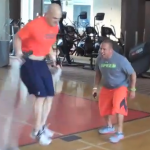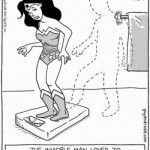

There’s always new fitness training methods and buzzwords popping up.Some things stay the same, but maybe called something new.That’s the case with MRT or Metabolic Resistance Training, which has actually been around for quite some time.It also has many different names, such as EPOC (excess post-exercise oxygen consumption).Whatever you call it, it seems to be gaining popularity these days and rightfully so.What is MRT?You’ve probably heard of circuit training before right?Again, the concept is really nothing new.The new term for this in fitness is Metabolic Resistance Training.What exactly does that mean?It basically means that you are doing shorter, higher intensity workouts moving quickly through the exercises in a “circuit like” fashion.It’s basically combining resistance exercise with cardiovascular training.What this does is “rev up” your metabolism to burn body fat.Let me explain.Your body is in oxygen deficit for many hours post exercise (hence the name EPOC).The key to MRT is short, intense exercise programs that increase your body metabolism. The end result is a fat burning machine, so to speak.Research has shown that there are great benefits following this type of training.The major benefit is that after resistive training, your body’s metabolism (how your body burns energy) is ramped up for as many as 38 hours post exercise (in a study by Schuenke, et al).That’s a pretty significant result.You work out and your body continues to burn calories for many hours after you’re done.This effect is known as the “afterburn effect“.This is a major difference from aerobic conditioning, such as running on the treadmill for an hour.This type of exercise only burns the calories during the exercise, not for the hours after, as is the case with resistance exercise.Strength training essentially continues to burn the calories while you sleep, while at rest, and maybe even up until your next workout.And here’s another benefit of resistance training as compared to aerobic exercise alone.Building lean muscle makes it easier to lose fat.Why?Because muscle is much more efficient at burning calories. Fat is not.By adding 1 pound of muscle, your body may burn up to 50 extra calories per day.This says that muscle tissue is a highly effective component of an efficient metabolism process that helps your body to burn body fat.MRT or Metabolic Resistance Training may be a newer fitness buzzword, but the concept is proven.This type of training provides for endless training options, especially if you’re limited on time.You can have quick, highly effective workouts that will help to blast the body fat (with the proper nutrition, of course).So, think about training “metabolically” for fat loss, increasing strength, and enhancing performance and energy.The long cardio routines can be beneficial too, but not to the extent of MRT and that type of training DOES NOT create an “afterburn” type of effect.If you truly enjoy long cardio routines and your goals are running marathons or other endurance challenges, then continue to do so.But if your goals are fat loss and lean muscle building, MRT is a great training method for these results.
View article –
Metabolic Resistance Training | Rdella Training | No BS Strength …






 For now classes are 6pm and 640pm at 2840 Wildwood st in the Boise Cloggers studio.
Book your class NOW!
click this ==>
For now classes are 6pm and 640pm at 2840 Wildwood st in the Boise Cloggers studio.
Book your class NOW!
click this ==>








